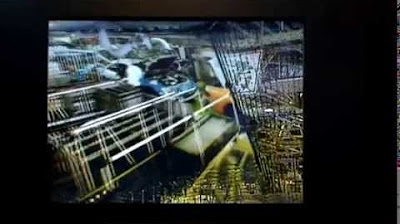L'histoire de l'aventure Toyota
Summary
TLDRThis inspirational story chronicles the journey of Toyota, from its humble beginnings as a small loom company founded by Sakichi Toyota, to its transformation into a global automotive giant. Driven by innovation and determination, Sakichi’s vision was passed on to his son, Kiichiro, who embraced the challenge of creating Japan's first automobile. Despite early struggles and setbacks, Toyota persevered, adopting groundbreaking production systems and focusing on continuous improvement. The company’s global expansion, fueled by quality and innovation, led to success in markets like the U.S., and Toyota’s legacy now includes a commitment to customer satisfaction and sustainable growth.
Takeaways
- 😀 Toyota's story begins with Sakichi Toyota, a young carpenter apprentice with a vision to revolutionize loom technology in Japan.
- 😀 Sakichi Toyota's invention of a fully automatic loom in 1894 was a breakthrough that led to the establishment of his company, Toyota Spinning and Weaving.
- 😀 Despite facing financial setbacks and economic recession in 1910, Sakichi Toyota remained dedicated to research and development, eventually inspiring his son Kiichiro to continue the legacy.
- 😀 Kiichiro Toyota, inspired by industrial advances in the United States, set out to build Japan's first automobile, launching Toyota Motor Corporation in 1937.
- 😀 The creation of the first Toyota automobile, the Model A1, in 1935 marked a major turning point, transitioning Toyota from loom production to car manufacturing.
- 😀 The name change from 'Toyoda' to 'Toyota' was made for aesthetic reasons, as 'Toyota' was easier to write and pronounce in Japanese.
- 😀 In the 1940s, Toyota faced bankruptcy but rebounded by focusing on productivity and efficiency, particularly through the work of Taiichi Ohno and his implementation of the Toyota Production System (TPS).
- 😀 TPS focused on improving manufacturing efficiency and worker empowerment, setting the stage for Toyota's global success in the automotive industry.
- 😀 Toyota expanded internationally in the 1950s, learning valuable lessons from its early failures in the U.S. market, eventually achieving success with the Toyota Corona in 1965.
- 😀 By the 1980s, Toyota's commitment to innovation, total quality control, and Kaizen (continuous improvement) positioned it as a leader in the global automotive market, with production plants opening worldwide.
Q & A
Who is the central figure in the story of Toyota's founding?
-The central figure in the story of Toyota's founding is Sakichi Toyota, a young carpenter apprentice with a vision to revolutionize the loom industry in Japan.
What was Sakichi Toyota's first significant invention?
-Sakichi Toyota's first significant invention was a wooden manually operated loom, which he patented in 1891.
How did the economic recession in Japan affect Sakichi Toyota's business?
-The recession in Japan forced Sakichi Toyota to resign from his own company in 1910, losing his factory, employees, and many of the machines he had invented.
What inspired Sakichi Toyota to dream of building an automobile?
-Sakichi Toyota was inspired to build an automobile after his trip to the United States, where he observed the advancements in industrial technology, including automobiles.
How did Kiichiro Toyota contribute to the automotive vision of his father?
-Kiichiro Toyota, Sakichi's son, embraced his father's dream and took on the challenge of building Japan's first automobile, eventually leading the development of the prototype in the 1930s.
What was the initial outcome when Toyota attempted to enter the American market?
-Toyota's first attempt to enter the American market with the Toyopet Crown in 1957 was a failure, with fewer than 300 cars sold in the first year due to the car's unsuitability for American highways.
What significant lesson did Toyota learn after the failure of the Toyopet Crown in the U.S. market?
-After the Toyopet Crown failure, Toyota learned the importance of designing cars specifically suited to the American road conditions, which led to the development of a more appropriate model.
What is the Toyota Production System (TPS), and how did it impact Toyota's success?
-The Toyota Production System (TPS) is a manufacturing strategy that focuses on efficiency and continuous improvement. It played a crucial role in Toyota's success by improving productivity and quality control, making Toyota a global leader in the automotive industry.
How did the oil crisis of the 1970s affect Toyota's business?
-The oil crisis of the 1970s boosted the demand for smaller, fuel-efficient cars, a need Toyota was well-prepared to meet with its economical and compact vehicles like the Corolla.
What is the Toyota Way, and how does it guide the company's operations?
-The Toyota Way is a set of values and beliefs based on continuous improvement and respect for people. It defines how Toyota's employees perform and behave to deliver the company's values, ensuring high levels of customer satisfaction and operational excellence.
Outlines

This section is available to paid users only. Please upgrade to access this part.
Upgrade NowMindmap

This section is available to paid users only. Please upgrade to access this part.
Upgrade NowKeywords

This section is available to paid users only. Please upgrade to access this part.
Upgrade NowHighlights

This section is available to paid users only. Please upgrade to access this part.
Upgrade NowTranscripts

This section is available to paid users only. Please upgrade to access this part.
Upgrade Now5.0 / 5 (0 votes)





